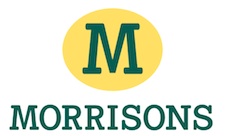UK DIY News
BRC: Retail Spending Slows Ahead Of Autumn Budget

The BRC has published retail sales data for September, covering the 5 weeks 31 August – 4 October 2025.
- UK Total retail sales increased by 2.3% year on year in September, against a growth of 2% in September 2024. This was above the 12-month average growth of 2.1%.
- Food sales increased by 4.3% year on year in September, against a growth of 2.3% in September 2024. This was above the 12-month average growth of 3.4%.
- Non-Food sales increased by 0.7% year on year in September, against a growth of 1.7% in September 2024. This was below the 12-month average growth of 0.9%.
- In-Store Non-Food sales increased by 0.5% year on year in September, against a growth of 0.8% in September 2024. This was above the 12-month average growth of 0.4%.
- Online Non-Food sales increased by 1% year on year in September, against a growth of 3.4% in September 2024. This was below the 12-month average growth of 1.8%.
- The online penetration rate (the proportion of Non-Food items bought online) increased to 37.6% in September from 37.2% in September 2024. This was above the 12-month average of 37%.
Helen Dickinson, Chief Executive of the British Retail Consortium, said:
“With the Budget looming large, and households facing higher bills, retail spending rose more slowly than in recent months. Milder weather meant shoppers delayed refreshing Autumn and Winter wardrobes and growth in food sales was largely inflationary rather than volume growth. Meanwhile, Electrical sales were buzzing thanks to the release of the new iPhone and Apple Watch.
“Rising inflation and a potentially taxing Budget is weighing on the minds of many households planning their Christmas spending. Retailers also face difficult decisions about investment and hiring over the Golden Quarter given uncertainty over business rates bills arriving in April. The future of many large anchor stores and thousands of jobs remains in jeopardy while the Treasury keeps the risk of a new business rates surtax on the table. By exempting these shops when the Budget announcements are made, the Chancellor can reduce the inflationary pressures hammering businesses and households alike.”
Linda Ellett, UK Head of Consumer, Retail & Leisure, KPMG, said:
“Overall sales grew in September, driven largely by household goods and increased mobile phone sales, as prominent brands launched new models. However, non-food sales are only growing by around 1.2% on average, indicating that spending continues to be very targeted as consumers remain cautious. As we enter the ‘golden’ quarter for the sector, retailers are planning product ranges and promotions to try and increase that rate of sales growth. They are also mindful that the Budget is beginning to move into view, with related detail about business rates reform and a general need for a boost to consumer confidence."
Food & Drink sector performance | Sarah Bradbury, CEO, IGD, said:
“Shopper confidence remained muted in September, with some tentative positive signs. These were driven by young, affluent Londoners who are more confident in their financial outlook and prioritise quality over cost saving. Grocery value growth maintained strong year-on-year increases in September, driven by food price inflation, which remains stubbornly high. Grocery volumes continued to be sluggish with household budgets under pressure, following the steady inflation rise since the start of the year. Despite grocery retailers announcing early price reductions to support budget-conscious shoppers, ongoing speculation surrounding Autumn Budget announcements may temper shopper sentiment ahead of the festive period.”
Retail Footfall (Covering the five weeks 31 Aug - 04 Oct 2025)
According to BRC-Sensormatic data:
• Total UK footfall decreased by 1.8% in September (YoY), down from -0.4% in August.
o High Street footfall decreased by 2.5% in September (YoY), down from +1.1% in August.
o Retail Park footfall decreased by 0.8% in September (YoY), up from -1.1% in August.
o Shopping Centre footfall decreased by 2.0% in September (YoY), down from 0.0% in August.
• Footfall decreased year-on-year across all nations again: down 0.5% in Northern Ireland, 1.8% in England, 2.3% in Scotland, and the largest decrease of 2.5% in Wales.
Helen Dickinson, Chief Executive of the British Retail Consortium, said:
Low consumer confidence ahead of a potential tax-rising Budget kept many shoppers away from retail locations in September. Tube strikes in London, heavy rainfall in the first half of September and Storm Amy towards the end of the month exacerbated the decline. While August saw stronger growth in High Street footfall, September saw High Streets back as the weakest performer across all retail locations. For the first time since June, all three retail destinations recorded year on year declines in shopper traffic.
Retailers ability to invest in local communities and High Streets has been hampered by last year’s Budget, which added £5 billion in employment costs to the industry, in addition to a new packaging tax. For retailers to invest in shopping destinations that will entice shoppers back, the government imposed cost burdens holding back that investment must be lifted. The upcoming Budget is the moment for the Chancellor to do just that, deliver the Labour manifesto commitment of a meaningful reduction in business rates for the industry and ensure no shop pays more in the process.
Andy Sumpter, Retail Consultant EMEA for Sensormatic, commented:
September saw footfall falter once more, with total UK retail visits down -1.8% year-on-year. While Retail Parks continued to show resilience at -0.8%, High Streets and Shopping Centres dipped -2.5% and -2.0% respectively. The month began with a modest uplift, driven by Back-to-School shopping, but momentum was quickly disrupted. London’s Tube strikes mid-month and Storm Amy at the end brought widespread disruption, impacting shopper activity nationwide.
These events compounded an already cautious consumer mood, with many still navigating cost pressures and economic uncertainty. Retailers will now be hoping that September’s slowdown was less a sign of retreat, and more a pause for thought. As we move into Q4, the opportunity lies in converting that caution into confidence—especially for those who can deliver value, experience, and convenience in equal measure. While not easy, it is essential.
Source : BRC
Image : shutterstock / 130030334 / MJTH
Thank you for the excellent presentation that you gave at Woodbury Park on Thursday morning. It was very interesting and thought-provoking for our Retail members. The feedback has been excellent.











































